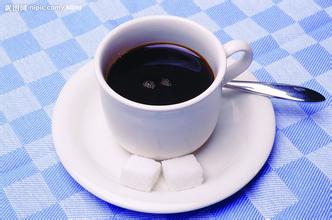Introduction of mild, delicious and moderate granule coffee from Joy Manor, Nicaragua.
Lake Nicaragua is the largest lake in Central America, located in southwestern Nicaragua. The local Indians call it Lake Corsi Walka, which means "freshwater sea". Lake Nicaragua is 160km long, with an average width of 60km and an area of 8264 square kilometers. Tens of thousands of years ago, Lake Nicaragua was an bay of the Pacific Ocean, cut off from the sea by volcanic eruptions. With the passing of the sun and the moon, the lake gradually diluted and became a freshwater lake. The marine fish that live in the lake also adapt to the desalination of the water and survive. At the beginning of the 21st century, there are still thousands of sharks, swordfish, silver carp and other marine fish in the lake. It is said that Lake Nicaragua is the only freshwater lake in the world that breeds marine fish.
At the beginning of the 21st century, there is a 19-kilometer isthmus connecting the Pacific Ocean and Lake Nicaragua. The water depth in the isthmus varies from 23 meters to 70 meters. The lake flows into the Caribbean through the San Juan River. The Tipitapa River connects with Lake Managua in the northwest.
Lake Nicaragua has more than 300 islands, the smallest of which is only a few hundred square meters. The largest island is Ometepe, which is 26 kilometers long and 13 kilometers wide and covers an area of more than 300 square kilometers. There are two volcanic cones on the island, one of which is 1610 meters high. The island also has many historical relics of Mayan culture.
The lake is full of waterbirds, and the lake is rich in all kinds of saltwater fish, such as crocodiles, sharks, sea turtles and so on. Sharks swim along the San Juan River in the Caribbean, so swimming is prohibited in Lake Nicaragua.
Watching large and small groups of turtles climb up the reef to bask in the sun is a view by the lake. The shore of Lake Nicaragua is shady with trees, dotted with many red-roofed pavilions, the lake is blue, the lake wind is familiar, waterbirds fly, fish jump out of the water from time to time, and the blue sky, white clouds, water light and lake color constitute a charming scenery. At the beginning of the 21st century, Lake Nicaragua has been on a par with the Masaya volcano and has become two famous landscapes in Nicaragua.
The Great Wall of Nicaragua
The Great Wall of Nicaragua is located 150 kilometers west of Managua, the capital of Nicaragua. It was originally a boundary stone for the land between Indian tribes, but also has a certain defense function, with a total length of 40 kilometers.
The suitable climate provides an excellent growth environment for the cultivation of coffee. The mineral-rich pozzolanic soil provides abundant nutrients for the cultivation of coffee trees. High-quality Nicaraguan coffee is also grown in the northern and central highlands of the country. The best coffee is produced in Matagalpa. The coffee produced here is highly respected by coffee lovers all over the world and gradually valued by the boutique community. Abundant precipitation, suitable temperature, high altitude, fertile soil and unique planting ecology are the prerequisites for creating high-quality Nicaraguan coffee.
Nicaragua is an economically backward agricultural country, is one of the poorest countries in Central America, the unemployment rate is very high, people live in poverty, and coffee is Nicaragua's pillar industry, producing nearly 100,000 tons of coffee beans every year. Due to the poor economic foundation, the coffee industry is still relatively backward, and coffee farmers are also in a relatively poor state.
Although Nicaragua is a country with a large territory in Central America, it is not a big producer in the coffee world, and its output and reputation are much weaker than that of its neighbor Costa Rica. But the high-quality Nicaraguan coffee is in the forefront of coffee beans in the world and enjoys a good reputation.
Traditional Nicaraguan coffee farmers are used to using water washing method for subsequent processing of coffee fruits. Coffee farmers are more accustomed to using water washing to ensure that the flavor of raw coffee beans is more stable and clean. it was not until about 2009 that the traditional attitudes of coffee farmers changed and began to try processing methods such as full sun and honey in more areas.
Matagalpa, which we mentioned earlier, is the coffee producing area that produces the best quality coffee in Nicaragua, and there is a heavyweight coffee estate worth introducing-the lemon tree (El Limoncillo). The manor is located in the plateau of Matagalpa between 950m and 1300m above sea level, and there are towering coniferous forests around the coffee trees, providing shade for the growth of coffee trees. This not only allows the coffee tree to be exposed to sunlight, but also protects the plant from being burned by the scorching sun.

Important Notice :
前街咖啡 FrontStreet Coffee has moved to new addredd:
FrontStreet Coffee Address: 315,Donghua East Road,GuangZhou
Tel:020 38364473
- Prev

An introduction to the characteristics of the flavor and taste of Blue Mountain Coffee in Valenderford Manor, Jamaica.
Located in the northwest of the Caribbean Sea, Jamaica is an island country at 17.42 degrees north latitude and 18.31 degrees north longitude and 76.11 degrees to 78.22 degrees west longitude. [1] the island of Jamaica is 234km long from east to west and 82km wide from north to south, with a territorial area of 11420 square kilometers, of which the land area is 10991 square kilometers. To the east across the Strait of Jamaica, facing Haiti, about 140 kilometers north of Cuba. The third largest in the Caribbean
- Next

Introduction to boutique coffee with rich aroma, smooth and meticulous taste of Nicaragua Los Congo Manor.
Columbus arrived here in 1502 and reached the east coast of Nicaragua. In 1522, Spanish colonists began to conquer the region. The cities of Granada and Leon were founded in 1524. From then on, Nicaragua became a Spanish colony and came under the jurisdiction of the Governor's Office of Guatemala. The city of Leon developed into a political and cultural center; Granada became a commercial and agricultural center. In the later period of colonial rule
Related
- Does Rose Summer choose Blue, Green or Red? Detailed explanation of Rose Summer Coffee plots and Classification in Panamanian Jade Manor
- What is the difference between the origin, producing area, processing plant, cooperative and manor of coffee beans?
- How fine does the espresso powder fit? how to grind the espresso?
- Sca coffee roasting degree color card coffee roasting degree 8 roasting color values what do you mean?
- The practice of lattes: how to make lattes at home
- Introduction to Indonesian Fine Coffee beans-- Java Coffee producing area of Indonesian Arabica Coffee
- How much will the flavor of light and medium roasted rose summer be expressed? What baking level is rose summer suitable for?
- Introduction to the characteristics of washing, sun-drying or wet-planing coffee commonly used in Mantenin, Indonesia
- Price characteristics of Arabica Coffee Bean Starbucks introduction to Manning Coffee Bean Taste producing area Variety Manor
- What is the authentic Yega flavor? What are the flavor characteristics of the really excellent Yejasuffi coffee beans?

